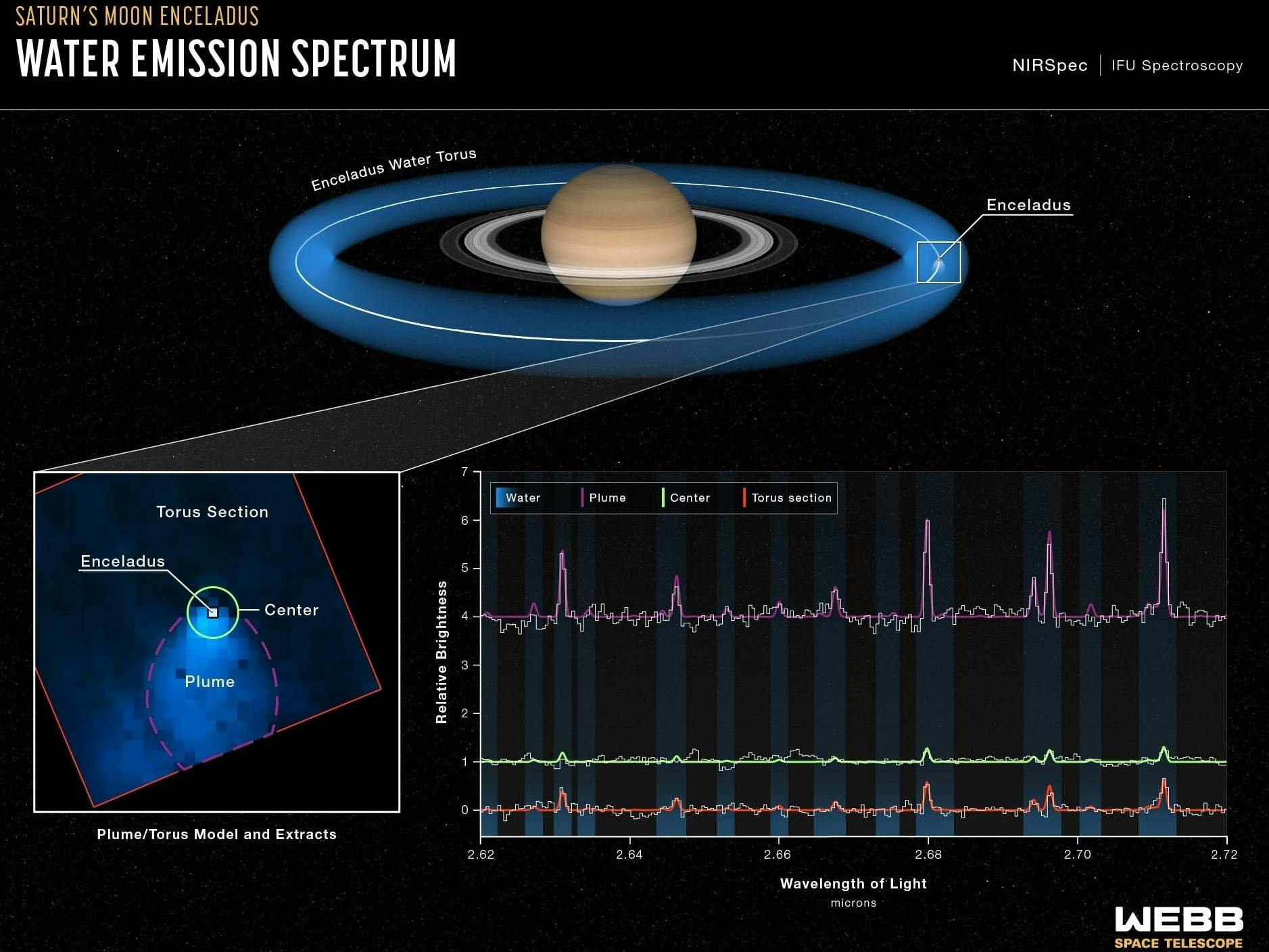Saturn’s moon Enceladus has fascinated researchers for years. Some even doubt life there. New recordings could confirm this theory.

Saturn’s moon Enceladus is covered in a thick layer of locally fragile ice.Cover images / Imago
A kilometer-thick ice sheet, massive cosmic geysers and a hidden ocean that may be home to something like life: Since the Cassini spacecraft first flew by Enceladus in 2005, astronomers around the world have been fascinated by Saturn’s moon. With the help of the James Webb telescope, researchers on behalf of NASA have gained new insights into the icy moon — and once again called for the launch of a new exploration satellite.
Thanks to previous observations, researchers already knew that there was a global ocean sleeping under the moon’s 45-kilometer-thick ice crust. NASA experts have long been particularly fascinated by the more than 100 massive geysers that still pierce the ice cap at the moon’s warmer south pole and blast their way into space with enormous pressure. Researchers have now been able to record this eruption of water vapor, more than 10,000 kilometers high, in high-resolution images using the Webb telescope.
Cosmic geysers fuel Saturn’s rings
“When I first looked at the data, I thought I must be wrong,” said Geronimo Villanueva of NASA’s Goddard Space Flight Center. “It was shocking to discover a geyser more than 20 times the size of the moon itself.” In fact, Enceladus is about 500 kilometers in diameter, one of the largest of Saturn’s many moons, but less than five percent the size of Earth.
Thanks to the latest observations, due to be published in an upcoming issue of the journal Nature Astronomy, researchers can now better understand exactly how geysers fuel Saturn’s distinctive rings. In fact, the fountains reach so far into space that the water ejected as ice collects in the orbit of the planet and forms one of the outer rings there.

This NASA visualization shows Enceladus orbiting Saturn and feeding its icy rings.Cover Photo / Imago / NASA
“As it (Enceladus) orbits Saturn, the moon and its fountains spit out water, leaving a kind of halo,” Villanueva explained. When seen from Earth, it would look almost “like a donut.”
Space researchers have known for a long time that the moon’s groundwater also contains organic substances such as amino acids. These “building blocks of life” could at least be an indication of the presence of complex life beyond Earth. So scientists at Johns Hopkins University in Maryland started talking about launching a new space probe – “Enceladus Orbilander”. So this could launch in the late 2030s toward the icy moon, land there and several years later possibly bring back the first samples of its hidden surroundings.


“Social media evangelist. Baconaholic. Devoted reader. Twitter scholar. Avid coffee trailblazer.”








More Stories
Longest jets in the universe discovered – giant particle streams as long as 140 Milky Way galaxies in a row
New method reveals 307 supernova remnants
Snapchat is upping the ante on augmented reality glasses